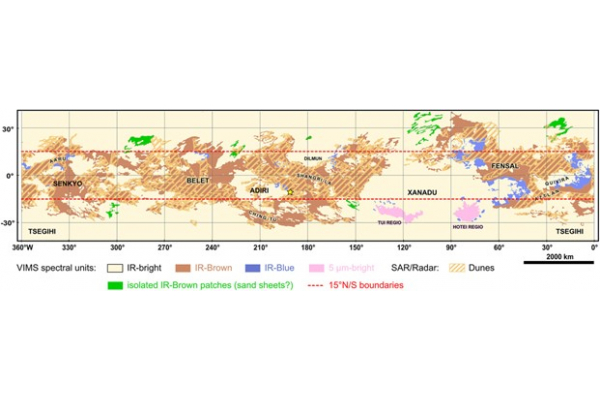THE EFFECTS OF SEASONALITY AND SURFACE HETEROGENEITY ON DUNE-FORMING WINDS IN TITAN'S SAND SEAS
Seminars
Semester 2
Saturn's moon Titan has a hydrological cycle like Earth, albeit based on liquid hydrocarbons. This, combined with Titan's complex photochemistry, allows for the deposition of organic compounds at the surface. These particles are the basis for Titan's equatorial dune system, which forms in part due to relatively dry conditions because of Titan's general circulation, and because of the dense atmosphere and low gravity. The organic compounds in Titan's dunes may be used to understand the moon's complex methane-based hydrological cycle and could be conducive to early life. Equatorial dune formation on Titan is currently poorly understood and few general circulation models (GCMs) have successfully explained the conditions required to match observations. Here, I utilize and evaluate the novel application of the ROCKE-3D GCM to a Titan-like system, building on Tokano (2010) hypothesis that dune formation on Titan is a result of westerly equatorial equinoctial gusts. I quantify the influence of surface roughness and topography on the occurrence of dune-forming winds. I show that topography is likely more important than surface roughness heterogeneity for dune formation. Simulated drift potential and resulting drift direction are highly localized, in some cases drastically shifting the dune orientation. The results of this study may be used to develop the ROCKE-3D model, identify locations of interest for future missions to Titan and provide an enhanced understanding of the general circulation and dominant factors controlling the general circulation of the moon.
Additional information: Mr. Maxwell COLLINS, maxqc@connect.hku.hk










